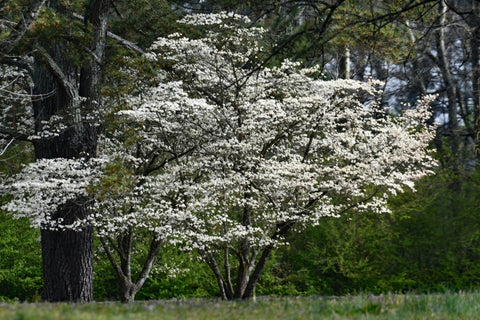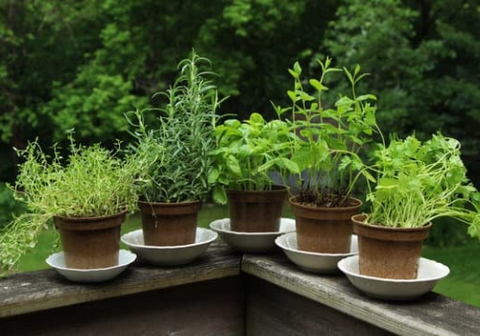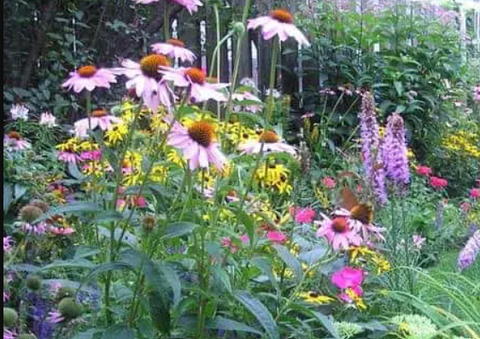Dogwoods (Cornus sp.) are a popular addition for properties having large trees. They provide abundant flowers in the early spring before much else blooms. As a small tree or large shrub, they provide structure and balance in the landscape with a great pop of color that make them a desirable landscape addition, but did you know how beneficial they are as food and habitat for songbirds and pollinators?
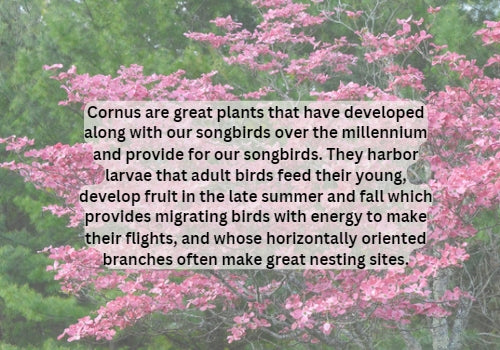
Consider these Dogwoods to help the birds and pollinators
Cornus florida, our most prominent species, grows along the edge of the woods throughout Maryland. Due to their beautiful flowers and great fall color, we often try to plant them in our landscape. When planting dogwoods realize that they prefer to be understory or along a woods edge where the soils are often humus rich and high in decomposing leaf litter. Mature canopy trees around them shelter dogwoods from the hot afternoon sun. We often make the mistake of placing them in yards, in less-than-ideal soils in full sun and they typically struggle to remain healthy. If you purchase a Cornus florida, try to mimic the soil and sunlight they prefer to help them thrive. They grow to twenty feet tall and wide with horizontal layered branching.
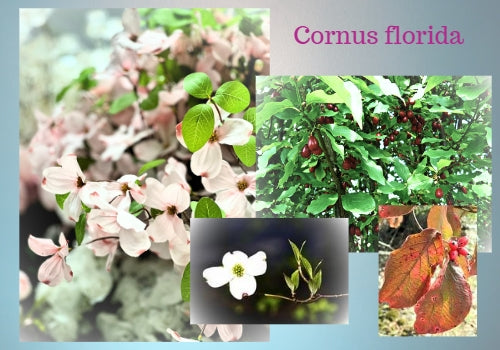
Photo credit: Bill Hubrick, Jim Brighton
Another often overlooked native dogwood is the Cornus alternifolia or Pagoda Dogwood. The tree grows to 18-25 feet tall and 30 feet wide. Leaves alternate along the stem. This small tree develops distinct horizontal branching and flowers or cymes develop along the branches. They are more tolerant of the sun, and not as meticulous about soil if it does not hold too much water. Their new growth is deep maroon, they develop dark purple almost black fruit that migrating birds utilize prior to migrating. Pagoda dogwood will often sucker creating stands of small trees.

Photo: Jim Brighton, MD Biodiversity Project
Pagoda dogwood is a favorite of Bluebirds, Brown Thrashers, Scarlet Tanager, Wood Thrush and Bobwhite. It supports specialized native mining bees and provides food to larva including Azures, Cecropia Moths, Unicorn Caterpillars and White Spot or Wood Moth.
If looking for a native dogwood that is more shrub like try the Cornus amomum or Silky Dogwood. It grows 8-10 feet tall and does well in wet soils, along streams, or in low areas. This shrub can tolerate shade to sun. It develops creamy white cymes that develop on the tips of the stems in May and June. Flowers attract native pollinators as well as honeybees. Dark blue-black fruits develop in drupes and mature in Aug through September. The Fruit is a favorite of migrating songbirds. Birds also nest in the twiggy branches of this dogwood. The leaves of this plant have silky hairs so they deter deer and other browsers. Fruits also attract Turkey, Bobwhite, Wood duck and other waterfowl when along streams.

Photo: Jim Brighton, NC Extension
Both the Cornus amomum and Cornus alternifolia should be included when planting a native area in your landscape. They will provide habitat and food as well as landscape interest for your property.


